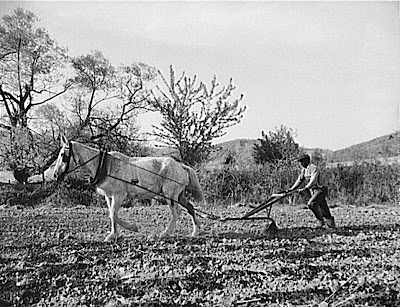Television viewers are more likely to watch shows that employ racially diverse casts and writers, according to a new study done at UCLA's Ralph J. Bunche Center for African American Studies.
In an analysis of more than 1,000 television shows that aired on 67 cable and broadcast networks during the 2011–12 season, UCLA researchers studying racial diversity in the entertainment industry found that more viewers were drawn to shows with ethnically diverse lead cast members and writers, while shows reflecting less diversity in their credits attracted smaller audiences.
Racial diversity does make a marked and measurable difference to television's bottom line, said Bunche Center director Darnell Hunt, a professor of sociology in the UCLA College of Letters and Science and author of the new study, "Hollywood Diversity Brief: Spotlight on Cable Television."
"It's clear that people are watching shows that reflect and relate to their own experiences," said Hunt, who has worked for two decades on several projects exploring issues of access and diversity in Hollywood.

Yet, according to the study, released on Oct. 8 at the 27th annual National Association for Multi-Ethnicity in Communications conference in New York, ethnic minorities and women remain woefully underrepresented on both cable and broadcast programs as lead actors, writers and show creators.
"This is one of the first studies, to my knowledge, that attempts to flesh out the relationship between the issue of diversity among cast members and writers and the bottom line," Hunt said. "While this brief is just the first snapshot in what we envision as a multi-year study, it certainly lends support to an argument we have been making for a long time. Everyone in the industry talks about the importance of diversity, but it clearly isn't priority one when decisions are made. And it's not going to be a priority until people realize how it affects the bottom line."
The study is the first in a series of analyses that will be done for the center's Hollywood Advancement Project. The project will track over time whether the TV-and-film industry is employing diverse groups of lead actors, writers, directors, producers and talent agents, and it will identify best practices for widening the pipeline for underrepresented groups.
Researchers found that for cable television shows, median household ratings were highest among those programs with casts that were 31 to 40 percent minority. Only dramas and comedies — not reality shows — were included in this part of the analysis. Examples of shows that reflected this level of diversity were "A.N.T. Farm" (Disney), "The Closer" (TNT) and "Falling Skies" (TNT).
At the other end of the spectrum, ratings were the lowest among shows with casts that were 10 percent minority or less, a category that included 52 shows — the largest number of cable shows in the analysis.
The importance of diversity to the bottom line was just as pronounced in broadcast television as it was in cable during the 2011–12 season, the researchers found. Median household ratings peaked among broadcast television shows that were 41 to 50 percent minority, while ratings took a dive for shows with casts that were 10 percent minority or less.
The study also showed a ratings slump for those shows on cable television with writing staffs that were 10 percent minority or less — the vast majority of shows in the analysis. Median household ratings were lowest for these shows. By contrast, ratings peaked among cable shows with writing staffs that were 11 to 20 percent minority and 41 to 50 percent minority. "In Plain Sight" (USA), "Common Law" (USA) and "Southland" (TNT) were among the eight shows included in these two categories.
This same relationship, however, did not hold completely true for broadcast television. Broadcast shows with the least diverse staffs did not post the lowest ratings. But broadcast shows with the highest ratings had writing staffs that were significantly more diverse — from 21 to 30 percent minority — than those of most broadcast shows.
Researchers also looked at who did a better job in the 2011–12 season — cable or broadcast networks — in reflecting diversity among lead actors and show creators.
"It's a mixed bag when it comes to who did better at this, depending on the variables we looked at," Hunt said. But women and minorities working as actors in lead roles and show creators were underrepresented on both cable and network television, based on their percentage in the U.S. population in 2010, he noted.
With the changing nature of television, the dominance of the broadcast networks is clearly waning, according to Hunt. "The fact that we had 61 cable networks in our study would have been unimaginable just a few years ago," he said. "Every network is getting smaller and smaller audiences. Shows can now be produced locally on a cheap budget for the Internet."
With the competition for ratings heated, Hunt said, "It makes sense that if the industry wants to keep up with these changes, it really has to pay close attention to what the audience is looking for."
And, as the researchers point out in the report, with the U.S. population becoming more diverse, "this new emerging America will undoubtedly continue to express its diversifying experiences and tastes by making programming choices that resonate more faithfully with them."
Hunt is the author of the "Hollywood Writers Report," an ongoing analysis for the Writers Guild of America focusing on employment, access and earnings among television and film writers. He was also the principal investigator on "The African American Television Report," released by the Screen Actors Guild in 2000. In 1993, he served as a media researcher for the U.S. Commission on Civil Rights hearings on diversity in Hollywood.
Support for this research was provided by the Bunche Center's Hollywood Advancement Project, Sony Pictures Entertainment and the Walter Kaitz Foundation.
University of California Office of Media Relations and Public Outreach By Cynthia Lee October 08, 2013 Media Contacts Ricardo Vazquez, 310-206-3986 rvazquez@support.ucla.edu
















